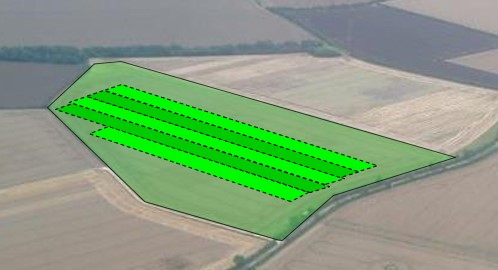Crop performance varies hugely within and between fields and farms. For example, AHDB Recommended List wheat variety trials typically range from <6 to >16 t/ha, where variation between varieties is <1 t/ha. Despite the principal drivers of growth (light, water & temperature) being expounded in the 1970s we still fail to explain or predict the vast majority of this variation.
Within field variation is a major challenge to running fair and accurate on-farm experiments. As part of the Agronomics line trials service, ADAS use bespoke software to clean and statistically analyse yield maps and other spatial data, modelling and taking into account the underlying spatial variation.





